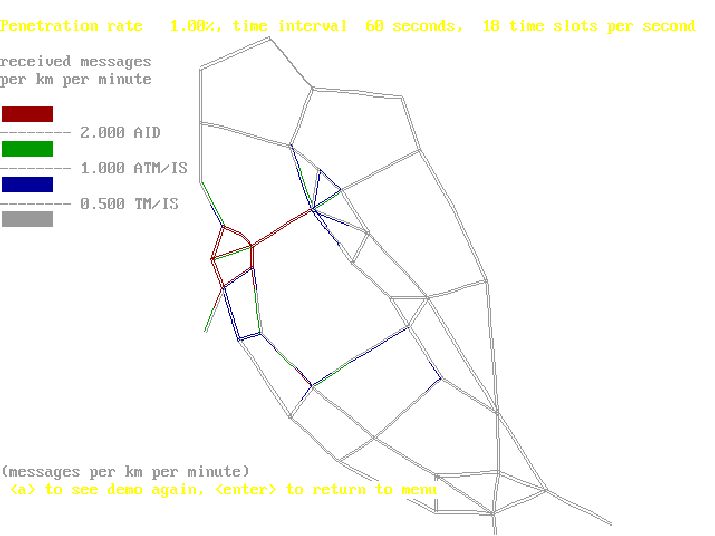
 |
JPL's Wireless Communication Reference WebsiteChapter: Network Concepts and Standards
|
Under this "supply-oriented" ALOHA access scheme, the process of transmitting probe vehicles messages is simple: The probe vehicles are assumed to randomly generate traffic messages, without polling messages from the base station and actually without coordination between transmission from other probe vehicles. As a result, mutual interference between messages transmitted from different probes can occur. In contrast to most other ALOHA applications, retransmission of messages lost in fading or collisions is not necessary. Because of path loss, messages transmitted in the vicinity of a base station are more likely to capture its receiver than other messages.
The traffic messages can be received by several base stations located in the area under study. In ALOHA concept, harmful interference between messages transmitted in the same time slot (collisions) may occur. Message collisions and interference from other cells have been taken into account, e.g. using models for the access method, receiver capture and mobile radio wave propagation. see the PROMOT menus for parameter choices.

PROMOT Screen Dump: Throughput of ALOHA channel with 3 base stations.
Penetration 1%, one transmission per probe vehicle every 60 sec, 18 time slots per second.
The analysis used to compute the above figure focuses on one particular road link a of the freeway with a traffic flow of q_a
vehicles per hour and average travel time of Z_a minutes. Using Little's Law, the
expected number of vehicles present on road link a is q_a Z_a. We call this the link traffic
density.
For a penetration grade p, the expected number of probe
vehicles that are present in segment a is
p q_a Z_a
Each probe transmits on average once every T seconds, choosing a random time slot. Since
the
number of vehicles is large, the message transmission process becomes Poisson distributed.
The
mean number of messages per time slot from segment a is
p q_a Z_a
G(a) = -----------
T f_s